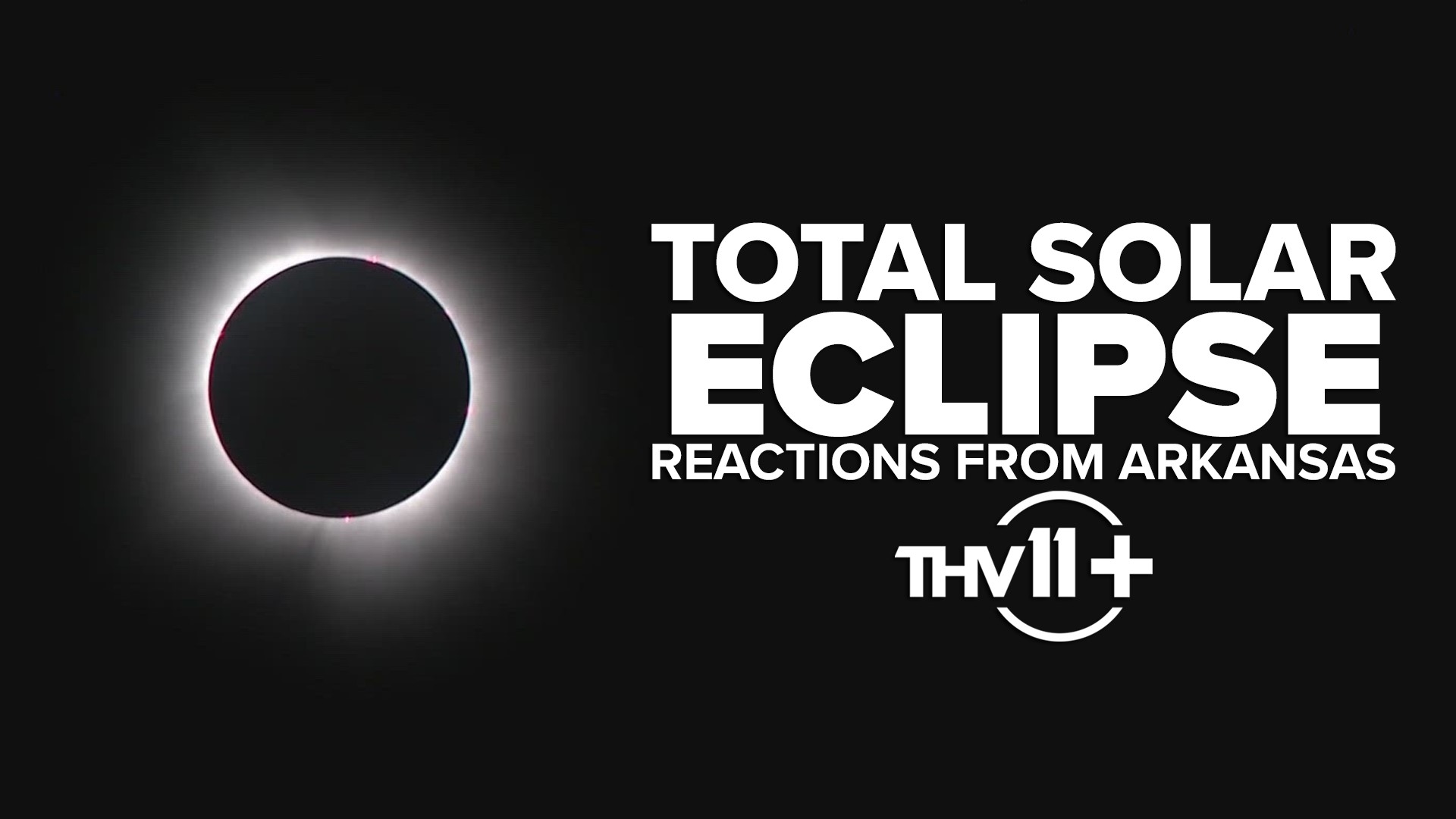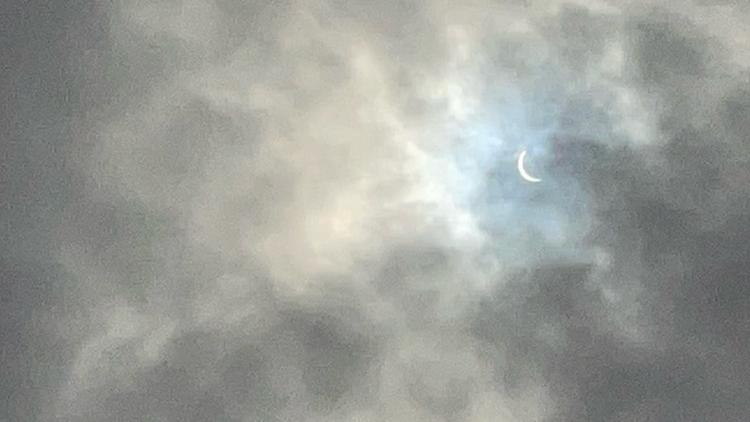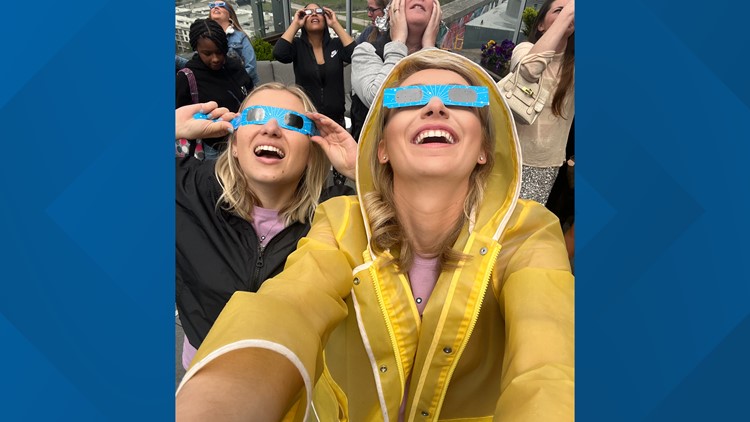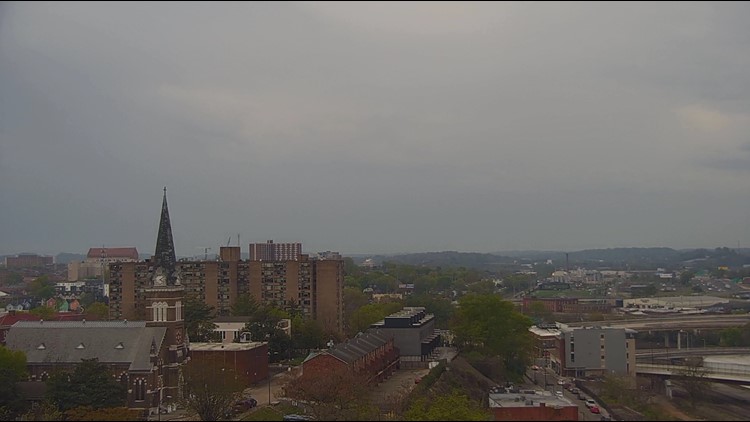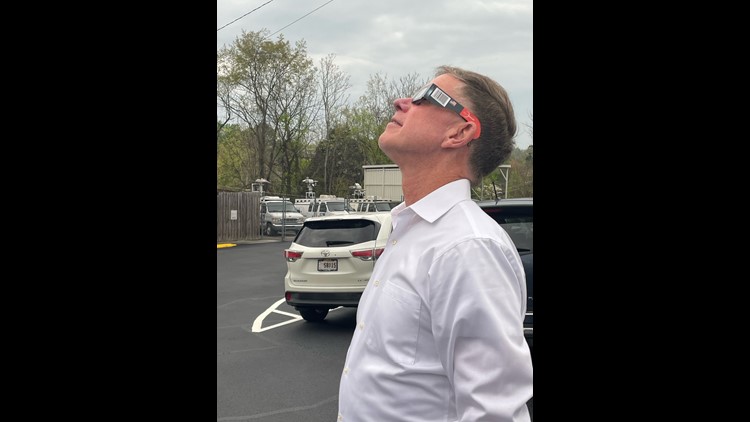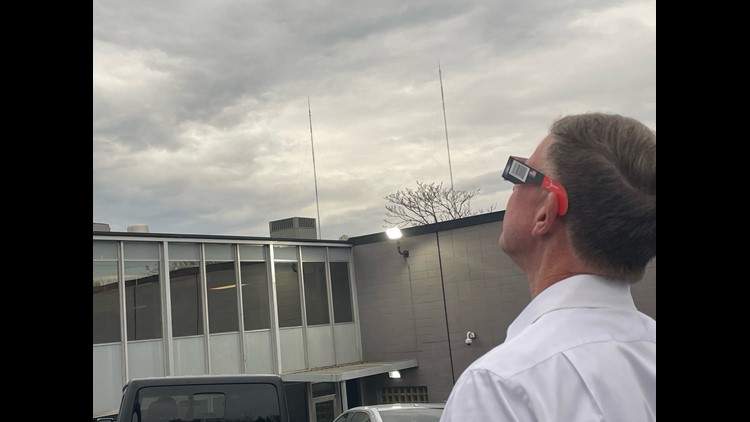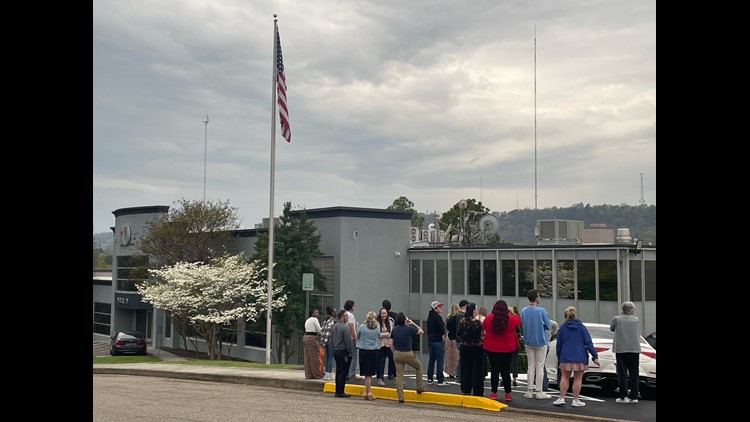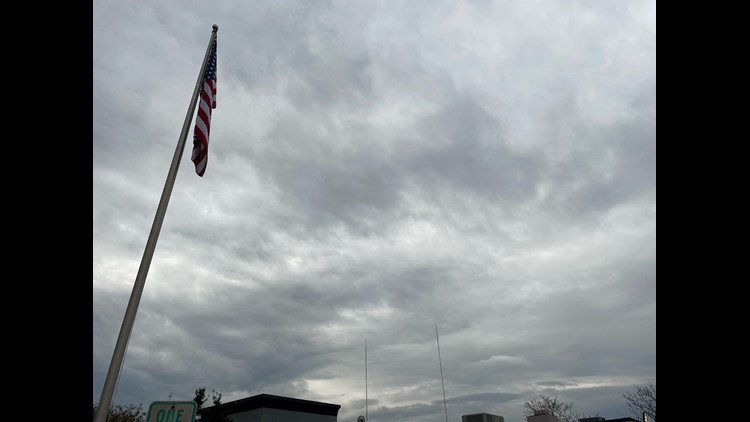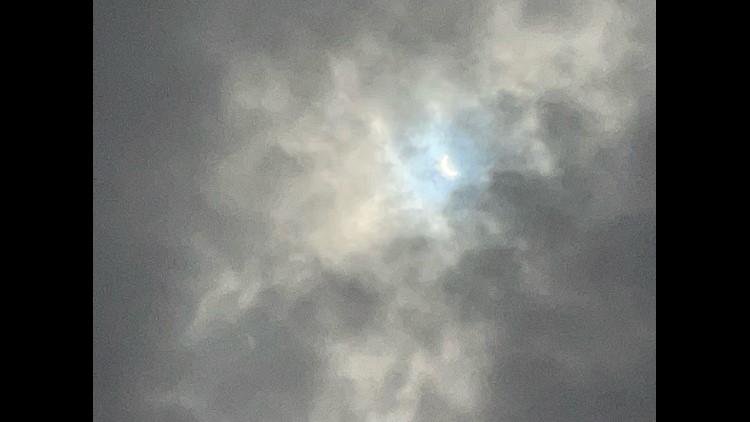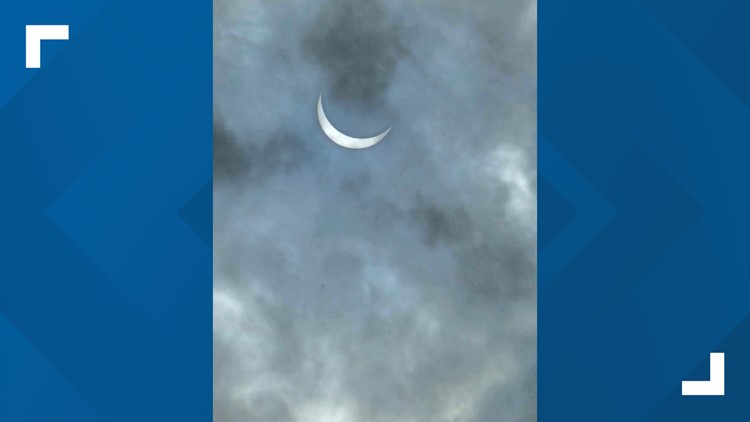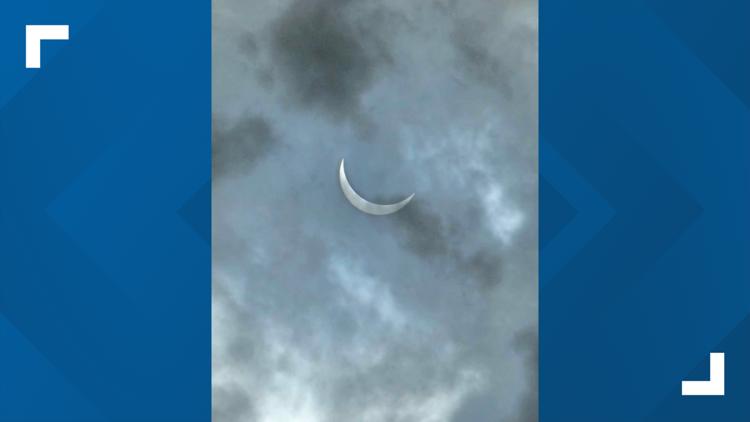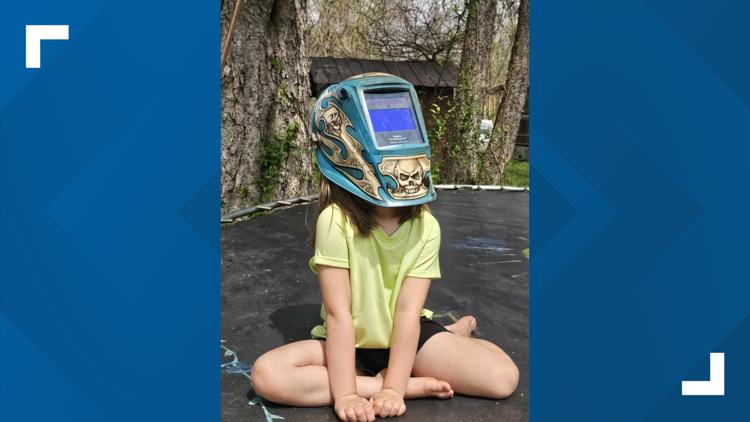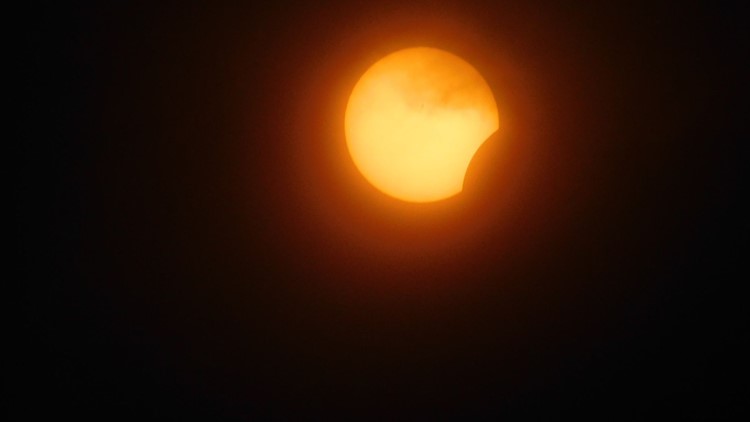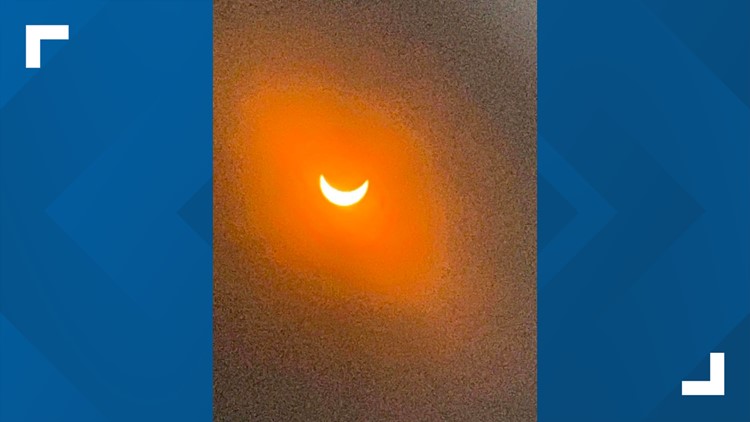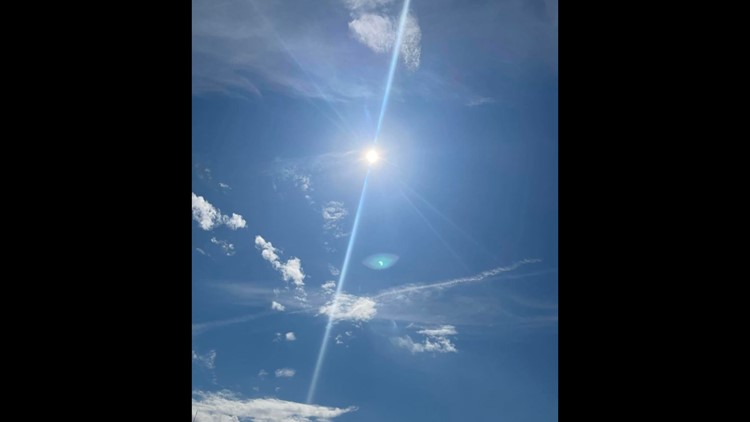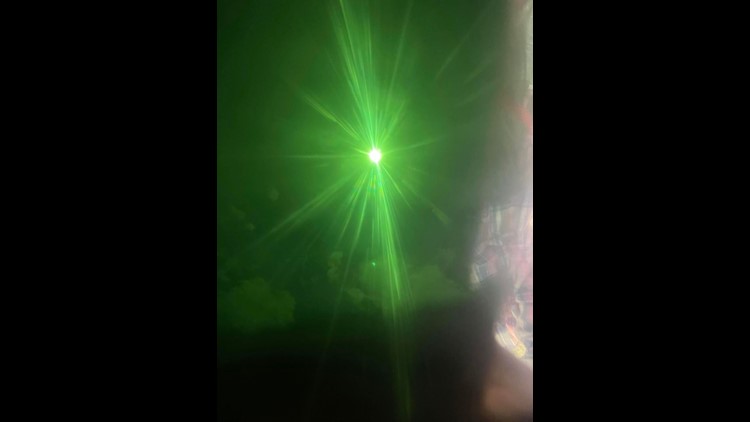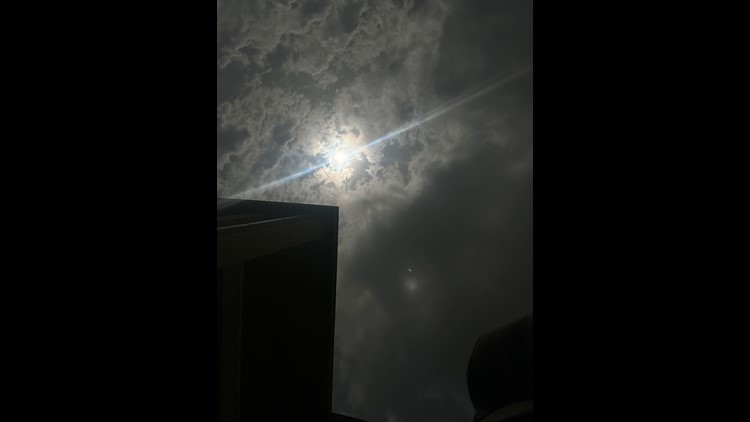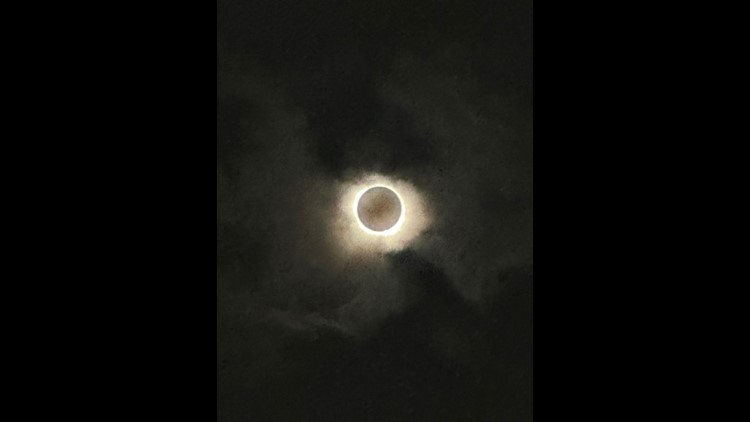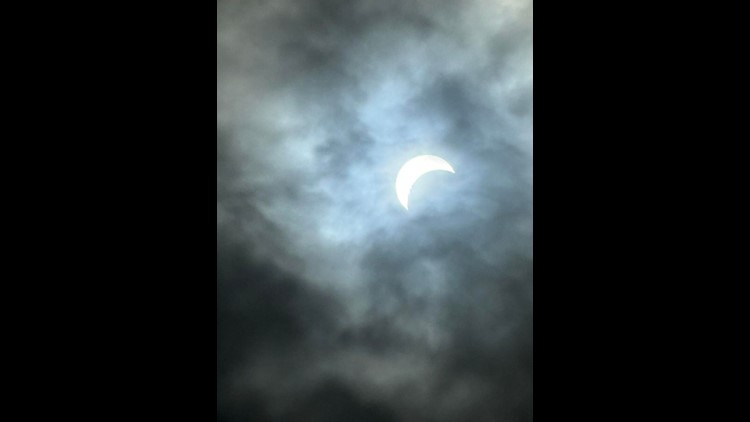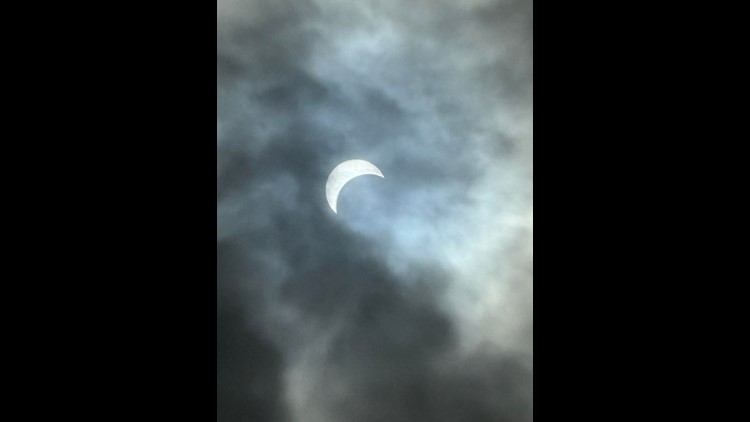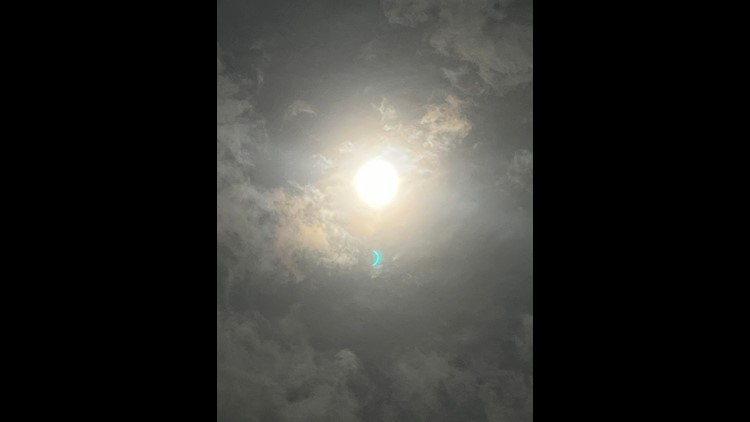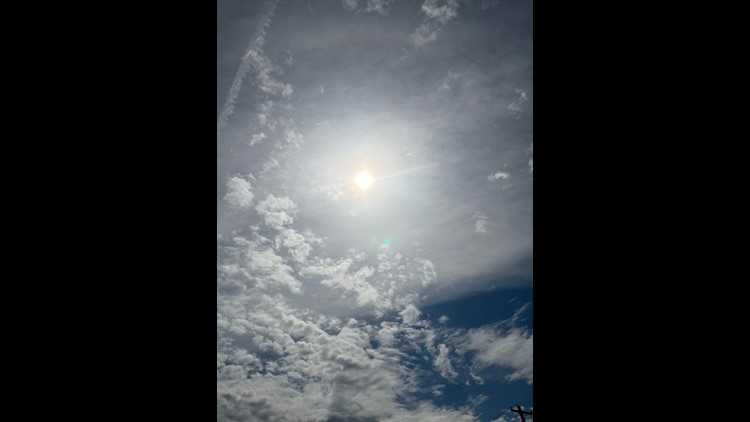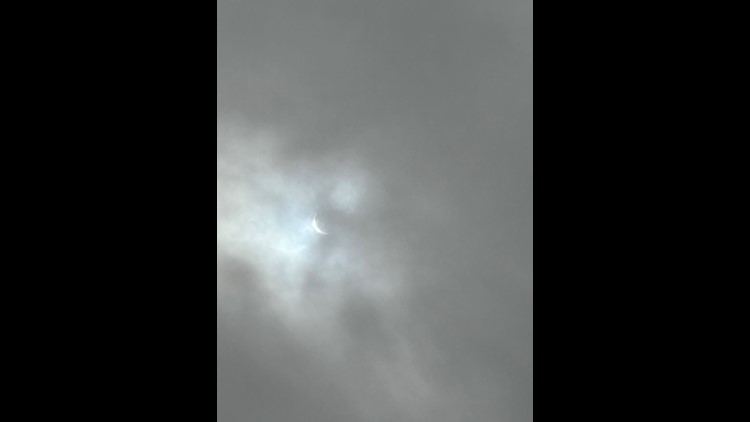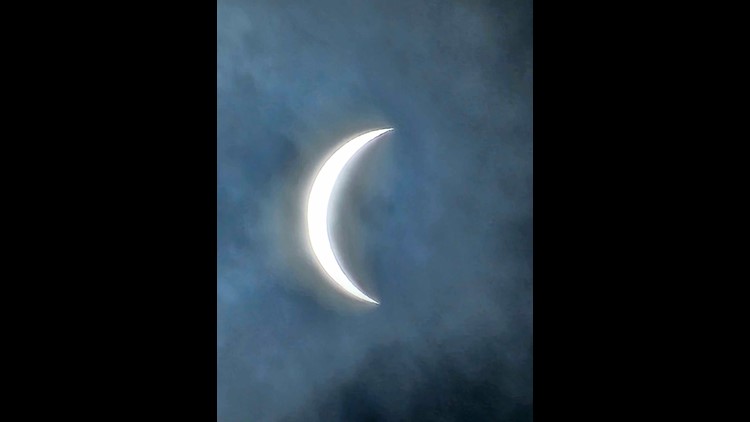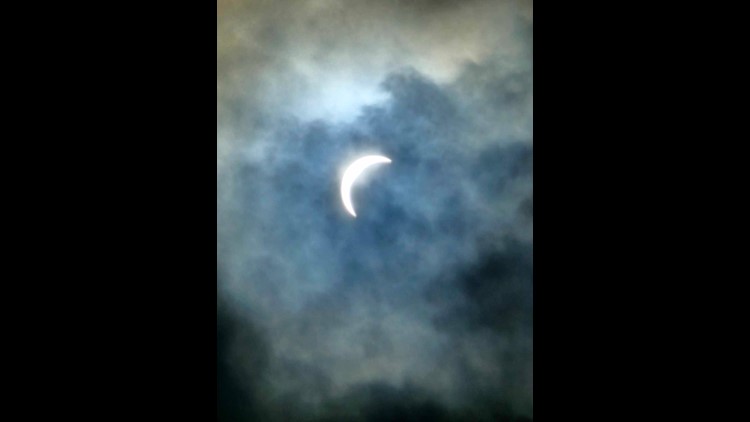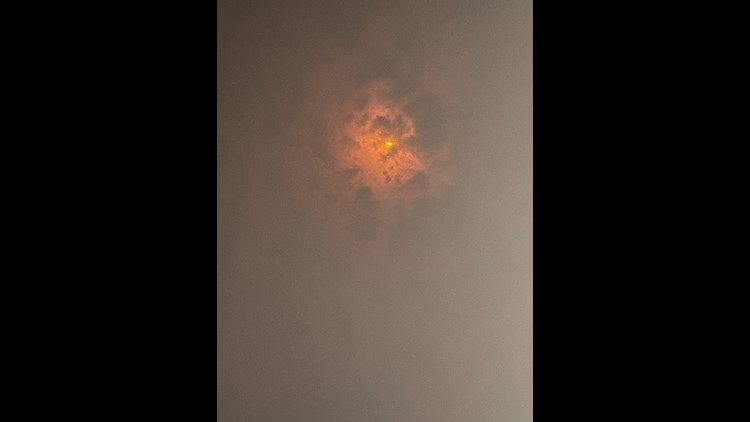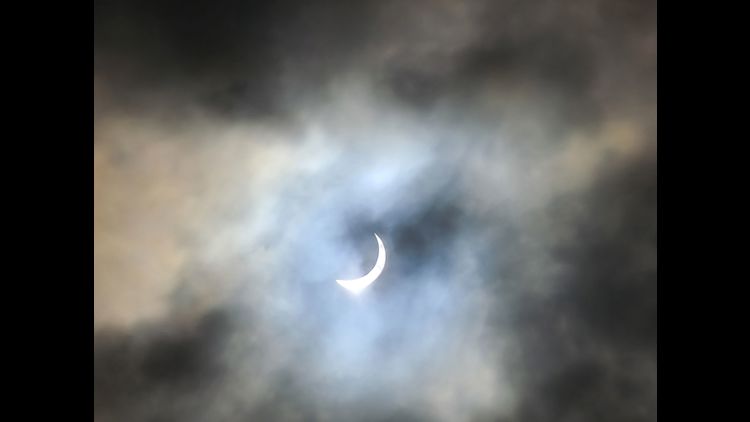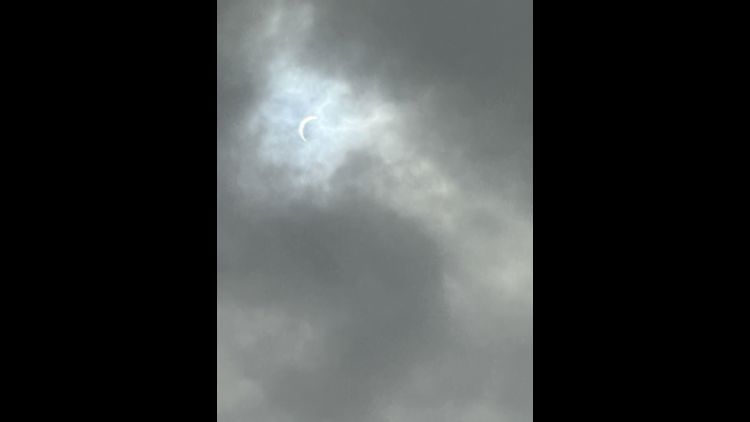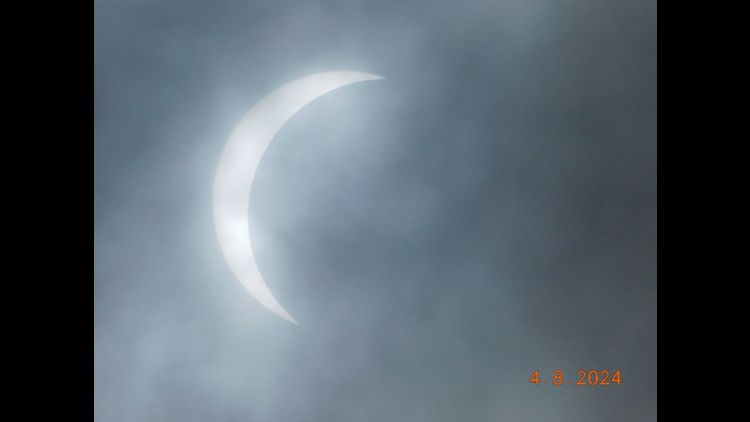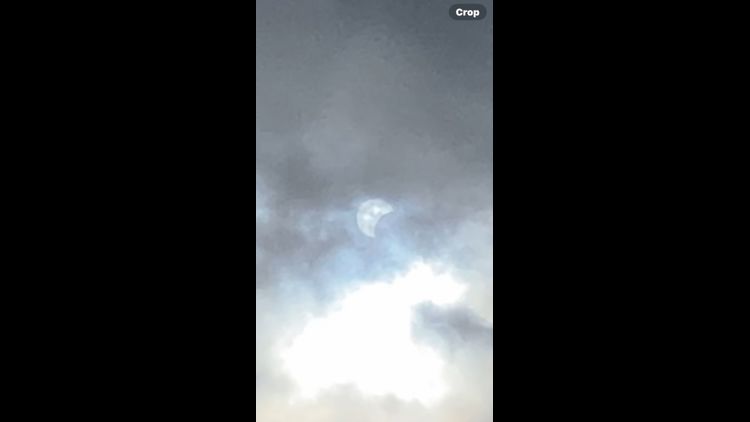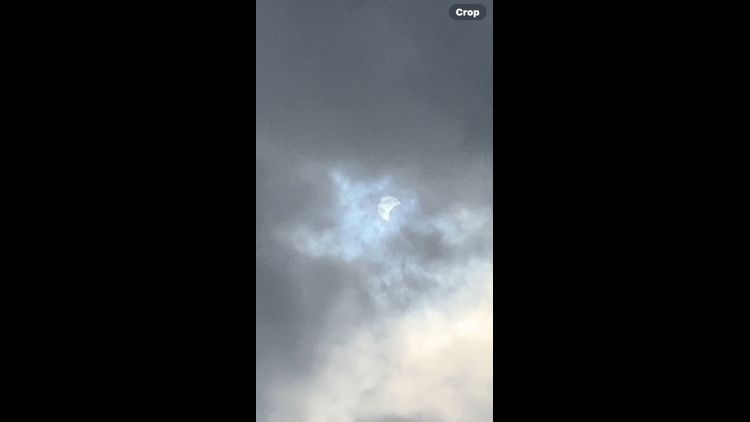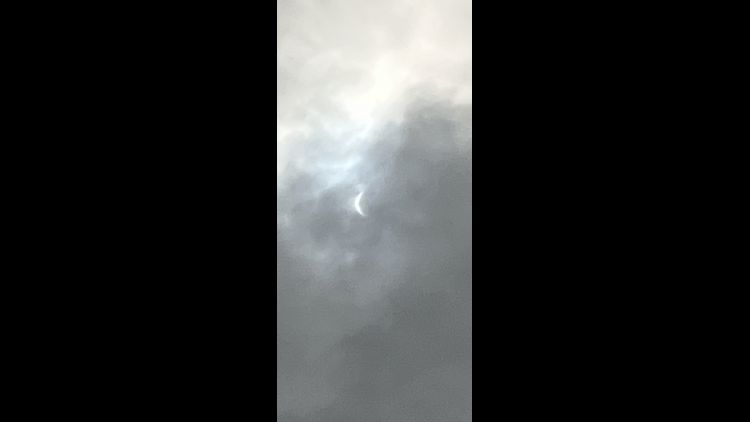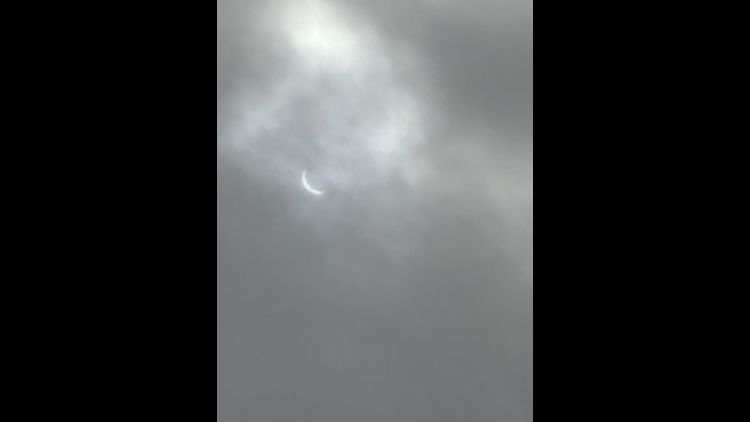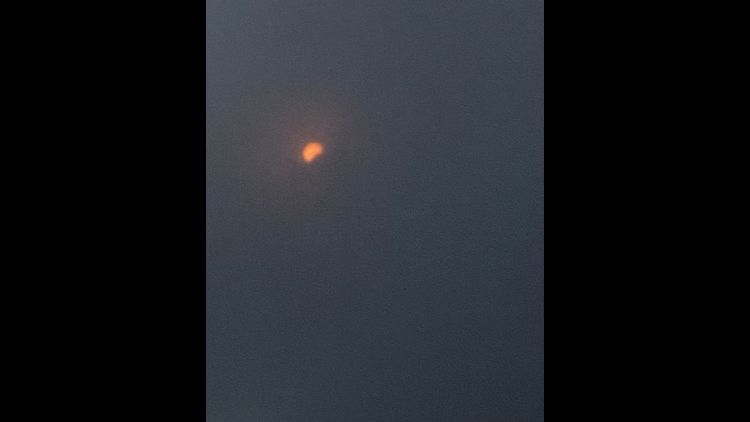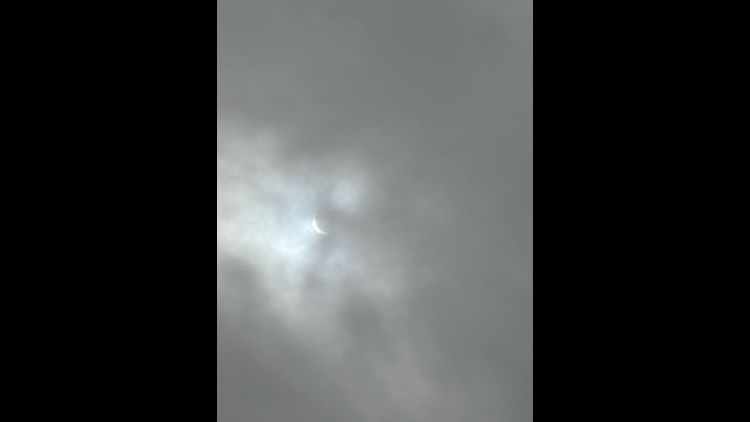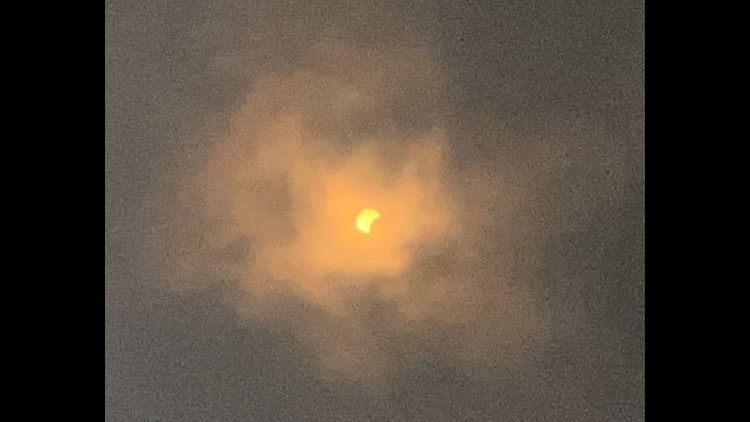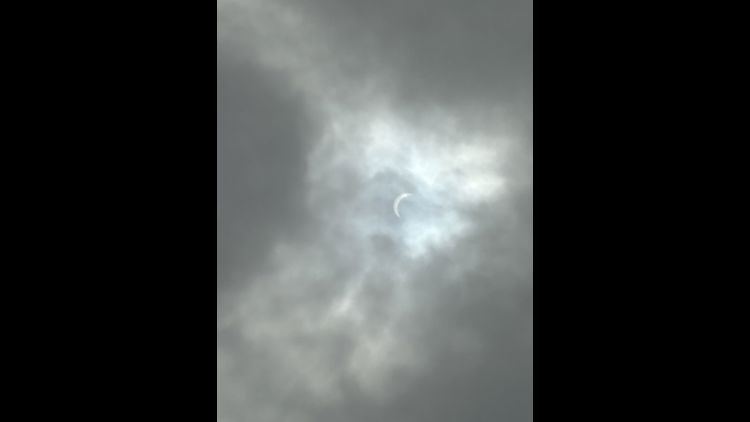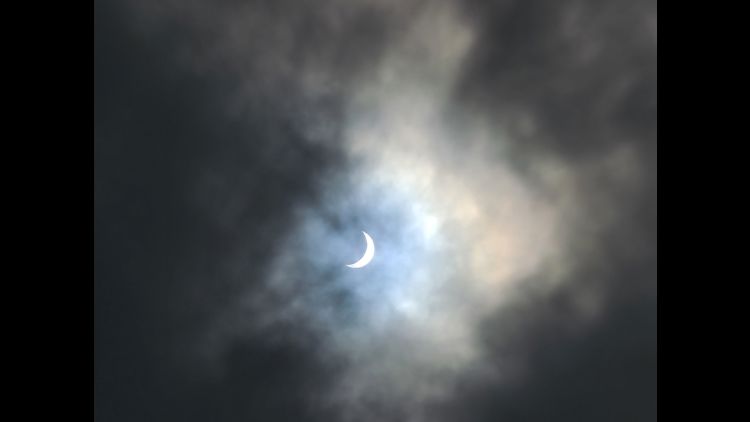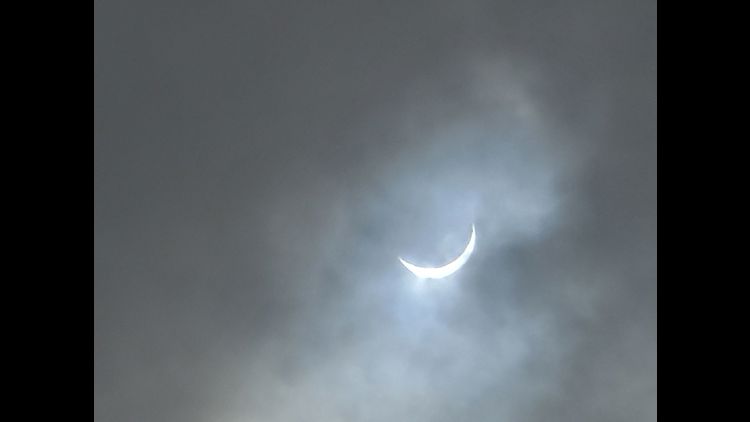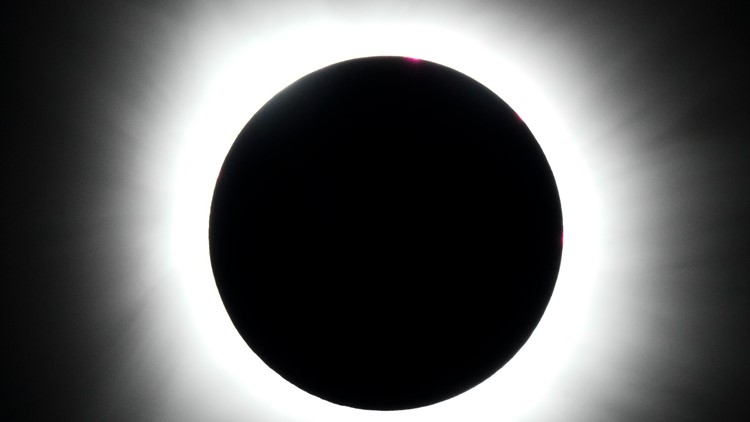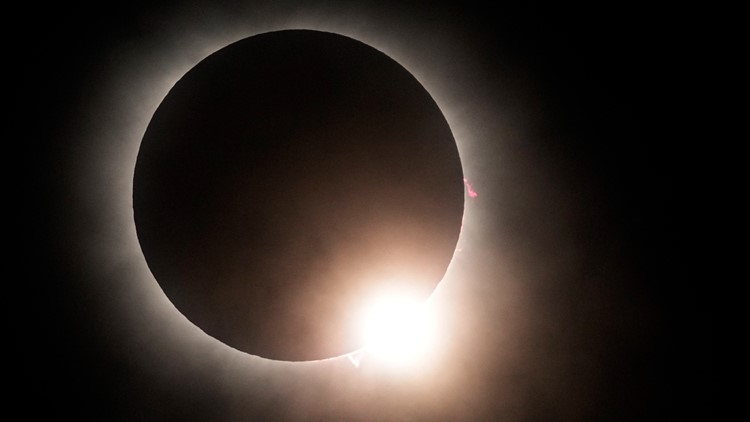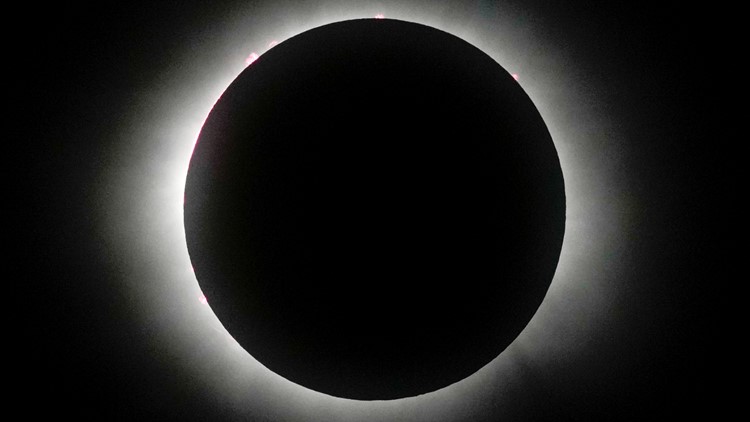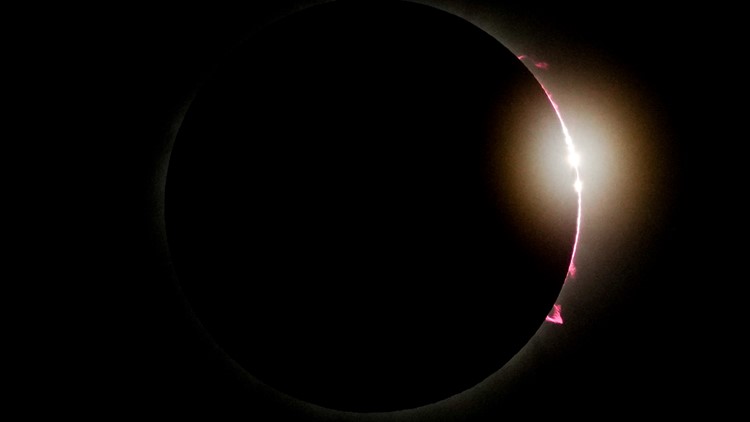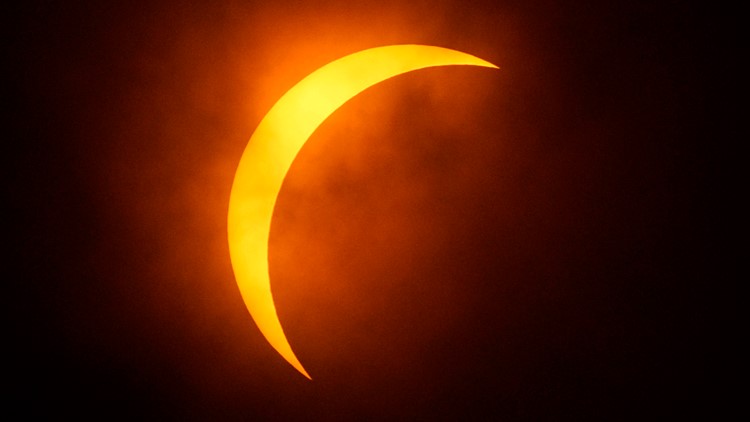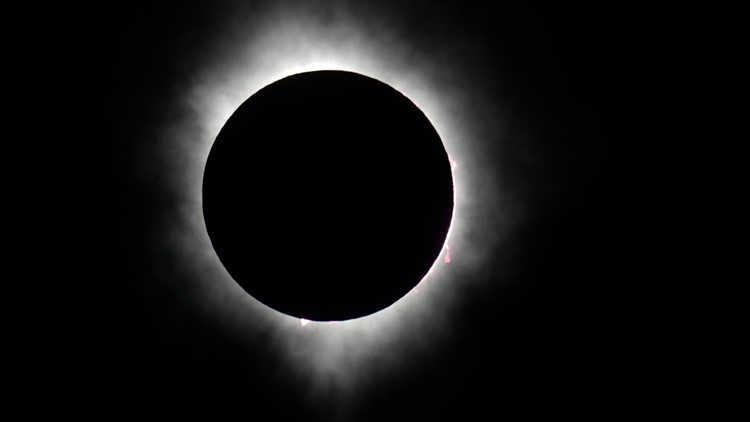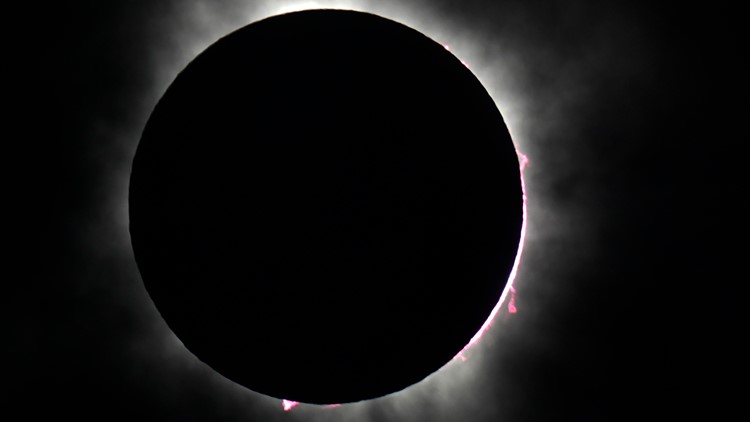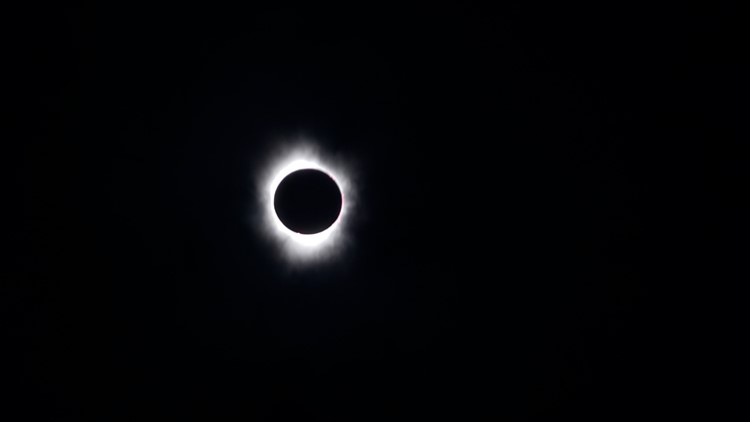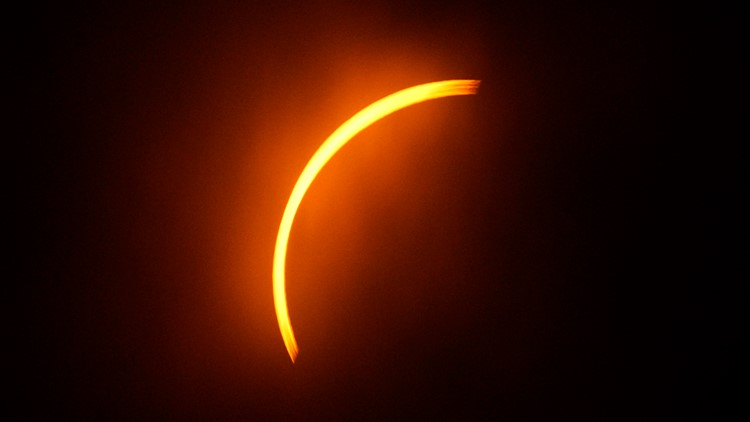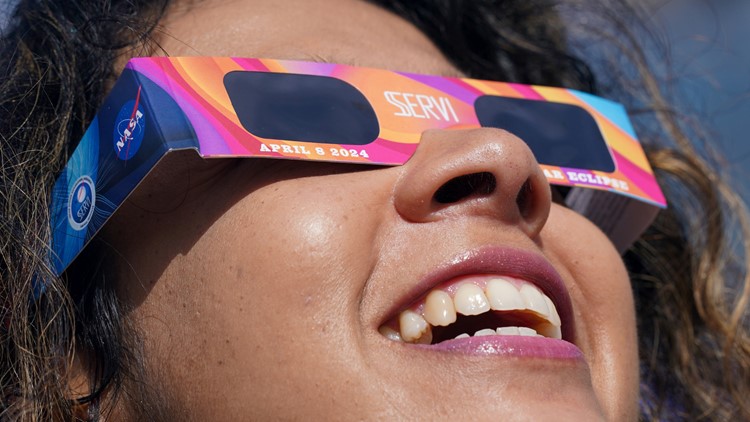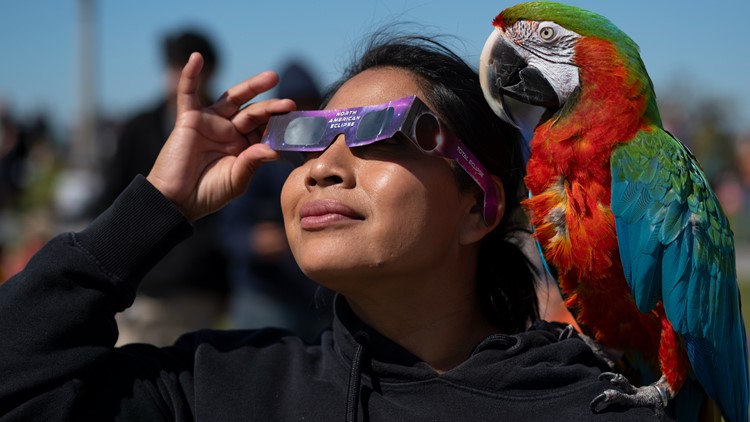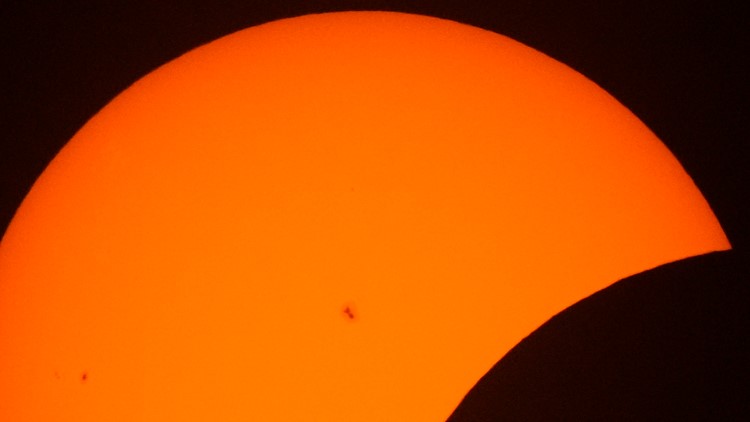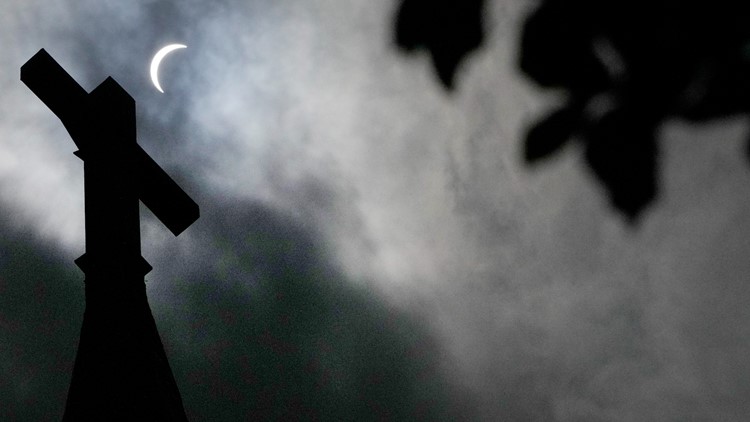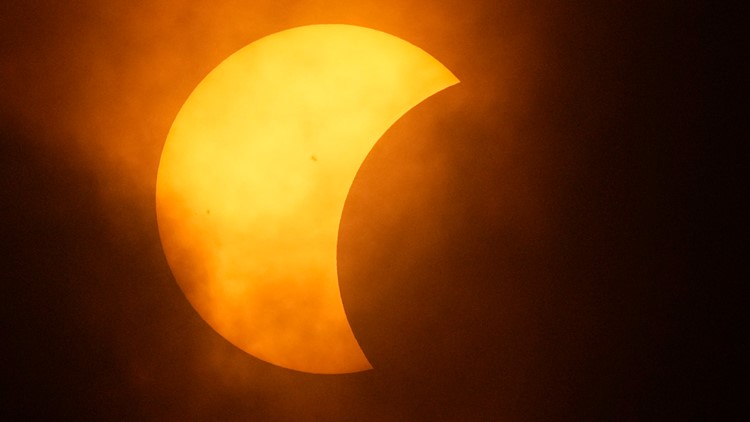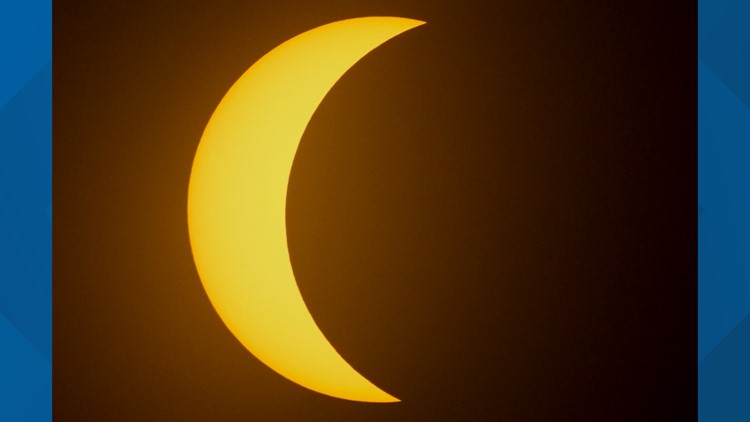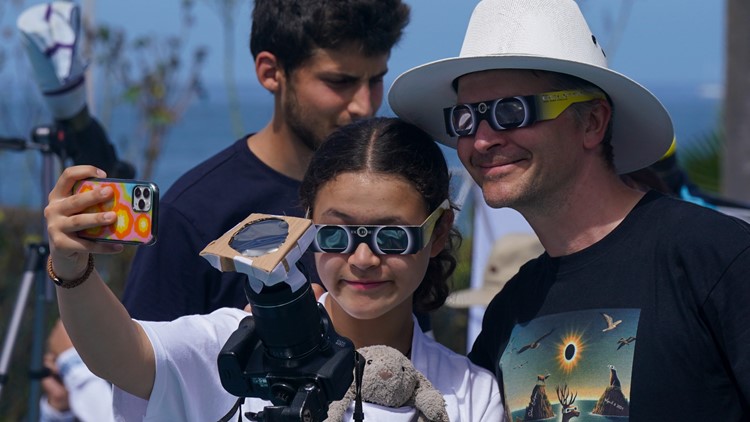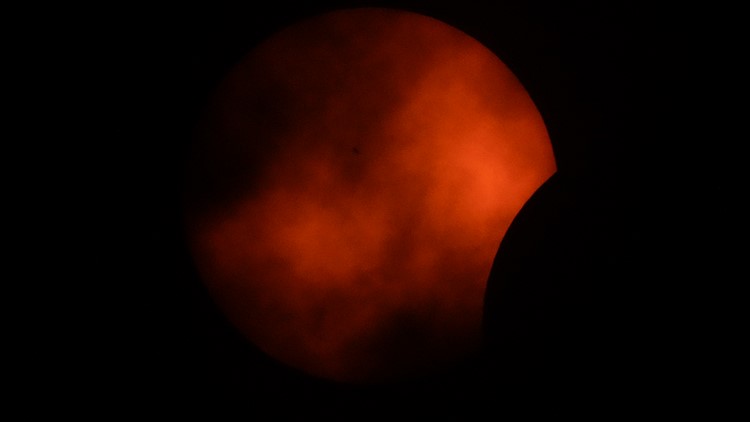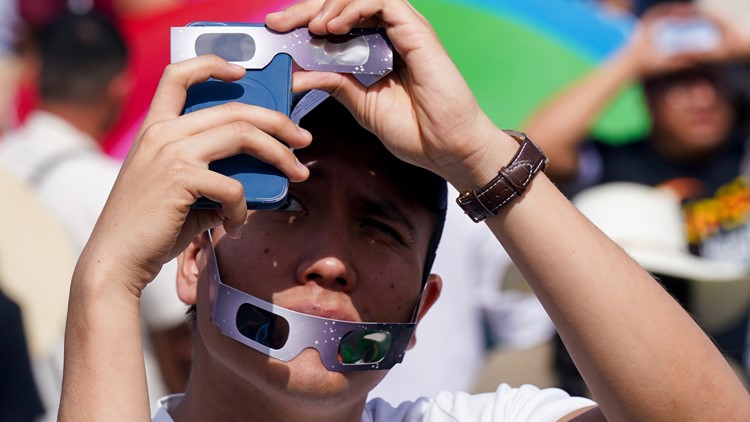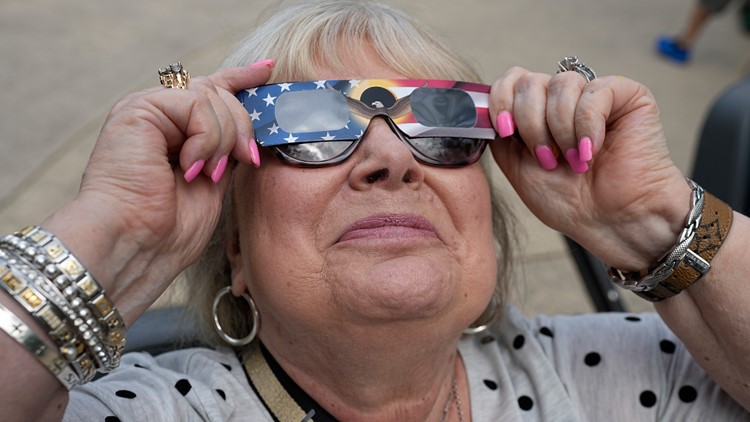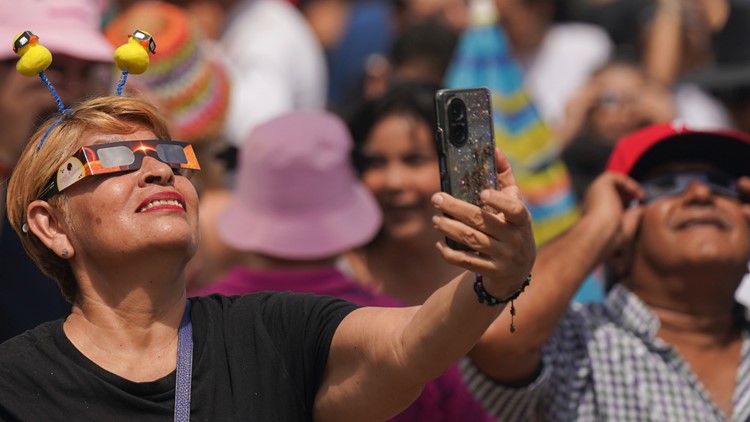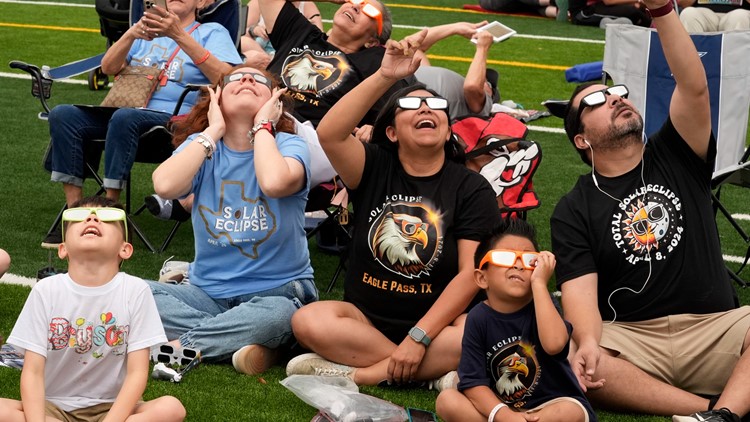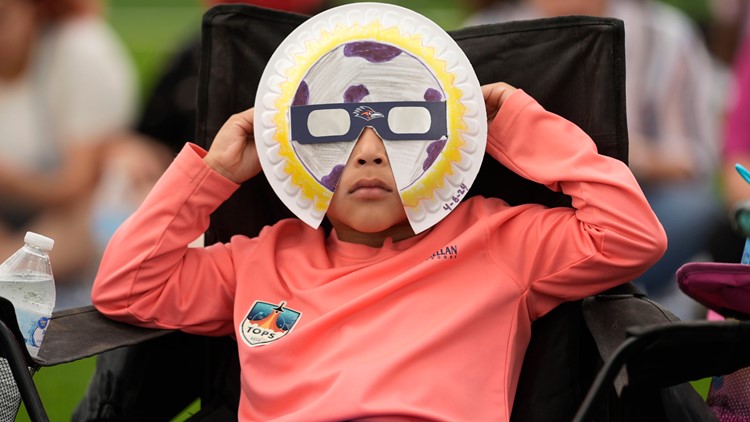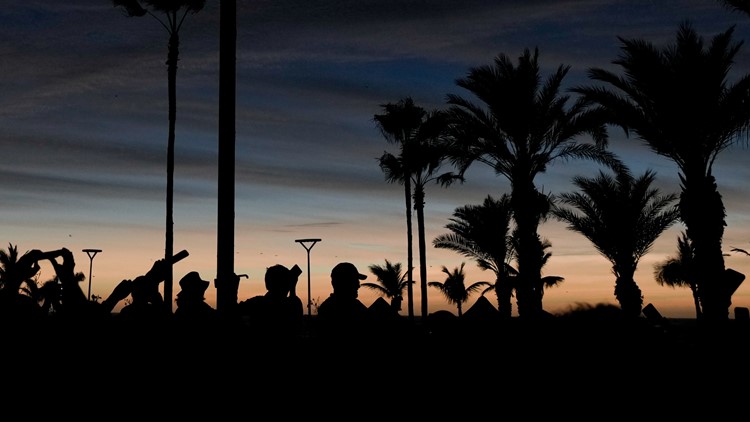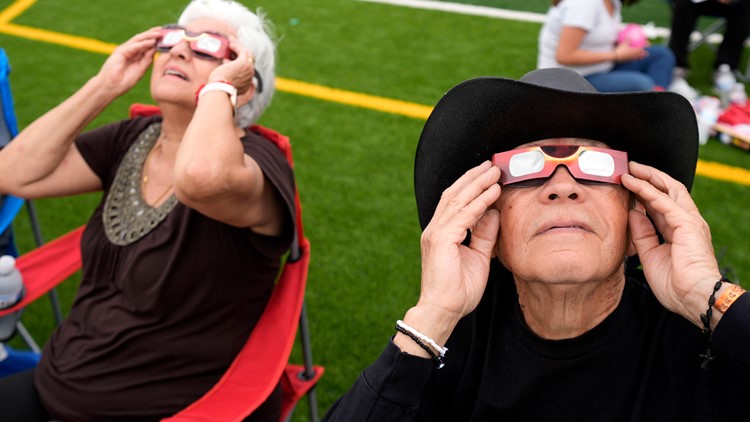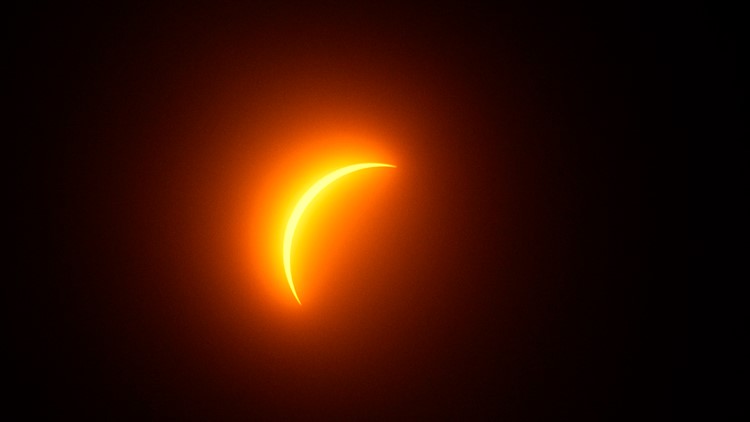KNOXVILLE, Tenn. — East Tennesseans hoping to see the partial eclipse on Monday were sadly treated to a dreary sky filled with clouds. For some, luck was on their side and a window in the clouds opened right as the partial eclipse hit its peak, but others were not so lucky.
East Tennessee was not in the path of totality this time around, so this eclipse wasn't exactly the same kind of spectacle we saw during the last Great American Eclipse in 2017. Still, consider yourself lucky if you were able to catch a glimpse of this one in East Tennessee because the cloudy weather certainly wasn't on our side.
Below are some photos from the eclipse in Knoxville and East Tennessee.
Photos: Clouds obscure 2024 partial eclipse in East Tennessee
Elsewhere in North America along the path of totality, the eclipse was just as much of a sight to behold as it was in 2017. Millions of spectators along a narrow corridor stretching from Mexico to the U.S. to Canada gathered to watch, and it will be the last time most will see a solar eclipse in America for the next two decades.
PHOTOS: Total Solar Eclipse 2024
When is the next solar eclipse after 2024?
North America won’t experience totality again until 2033, with Alaska getting sole dibs. Then that’s it until 2044, when totality will be confined to Western Canada, Montana and North Dakota.
There won’t be another U.S. eclipse spanning coast to coast until 2045. That one will stretch from Northern California all the way to Cape Canaveral, Florida.
What is a total solar eclipse?
On Monday, skies along the path of totality darkened to complete darkness for a few minutes as the moon completely blocked the face of the sun — known as total solar eclipse.
Such eclipses happen when the moon passes between the sun and the earth, casting a shadow on earth that will fully block the sun's light. Those located in the center of the moon's shadow when it hits earth will experience full totality, according to NASA.
Skies darken as if it were dusk and temperatures cool as a result of this phenomenon.
During these moments of darkness, most people were able to witness the sun's corona, or its outer atmosphere — usually covered by the bright face of the sun.
Unlike other eclipses, a total eclipse is the only type that allows viewers to momentarily take off their eclipse glasses during a small window where the sun is completely covered by the moon, NASA says. Until totality hits, viewers should always use their eclipse glasses or other methods of viewing, such as a pinhole projector.
Total solar eclipses can even mess with wildlife's perception of time.
During totality, some nocturnal animals wake up as they think its nighttime. For nonnocturnal animals, they might think it's bedtime.
However, its only in recent years that scientists have started to rigorously study the altered behaviors of wild, domestic and zoo animals during a full solar eclipse.
How often do solar eclipses occur?
Solar eclipses of all kinds happen more frequently than one might think.
NASA breaks down the math to about 2,380 solar eclipses of all kinds every 1,000 years — or roughly 2-3 solar eclipses each year. For total solar eclipses, where the moon completely covers the sun, it works out to two eclipses every three years.

